Nicholas Waytowich
Scalable Interactive Machine Learning for Future Command and Control
Feb 09, 2024
Abstract:Future warfare will require Command and Control (C2) personnel to make decisions at shrinking timescales in complex and potentially ill-defined situations. Given the need for robust decision-making processes and decision-support tools, integration of artificial and human intelligence holds the potential to revolutionize the C2 operations process to ensure adaptability and efficiency in rapidly changing operational environments. We propose to leverage recent promising breakthroughs in interactive machine learning, in which humans can cooperate with machine learning algorithms to guide machine learning algorithm behavior. This paper identifies several gaps in state-of-the-art science and technology that future work should address to extend these approaches to function in complex C2 contexts. In particular, we describe three research focus areas that together, aim to enable scalable interactive machine learning (SIML): 1) developing human-AI interaction algorithms to enable planning in complex, dynamic situations; 2) fostering resilient human-AI teams through optimizing roles, configurations, and trust; and 3) scaling algorithms and human-AI teams for flexibility across a range of potential contexts and situations.
COA-GPT: Generative Pre-trained Transformers for Accelerated Course of Action Development in Military Operations
Feb 01, 2024



Abstract:The development of Courses of Action (COAs) in military operations is traditionally a time-consuming and intricate process. Addressing this challenge, this study introduces COA-GPT, a novel algorithm employing Large Language Models (LLMs) for rapid and efficient generation of valid COAs. COA-GPT incorporates military doctrine and domain expertise to LLMs through in-context learning, allowing commanders to input mission information - in both text and image formats - and receive strategically aligned COAs for review and approval. Uniquely, COA-GPT not only accelerates COA development, producing initial COAs within seconds, but also facilitates real-time refinement based on commander feedback. This work evaluates COA-GPT in a military-relevant scenario within a militarized version of the StarCraft II game, comparing its performance against state-of-the-art reinforcement learning algorithms. Our results demonstrate COA-GPT's superiority in generating strategically sound COAs more swiftly, with added benefits of enhanced adaptability and alignment with commander intentions. COA-GPT's capability to rapidly adapt and update COAs during missions presents a transformative potential for military planning, particularly in addressing planning discrepancies and capitalizing on emergent windows of opportunities.
DIP-RL: Demonstration-Inferred Preference Learning in Minecraft
Jul 22, 2023

Abstract:In machine learning for sequential decision-making, an algorithmic agent learns to interact with an environment while receiving feedback in the form of a reward signal. However, in many unstructured real-world settings, such a reward signal is unknown and humans cannot reliably craft a reward signal that correctly captures desired behavior. To solve tasks in such unstructured and open-ended environments, we present Demonstration-Inferred Preference Reinforcement Learning (DIP-RL), an algorithm that leverages human demonstrations in three distinct ways, including training an autoencoder, seeding reinforcement learning (RL) training batches with demonstration data, and inferring preferences over behaviors to learn a reward function to guide RL. We evaluate DIP-RL in a tree-chopping task in Minecraft. Results suggest that the method can guide an RL agent to learn a reward function that reflects human preferences and that DIP-RL performs competitively relative to baselines. DIP-RL is inspired by our previous work on combining demonstrations and pairwise preferences in Minecraft, which was awarded a research prize at the 2022 NeurIPS MineRL BASALT competition, Learning from Human Feedback in Minecraft. Example trajectory rollouts of DIP-RL and baselines are located at https://sites.google.com/view/dip-rl.
Towards Solving Fuzzy Tasks with Human Feedback: A Retrospective of the MineRL BASALT 2022 Competition
Mar 23, 2023

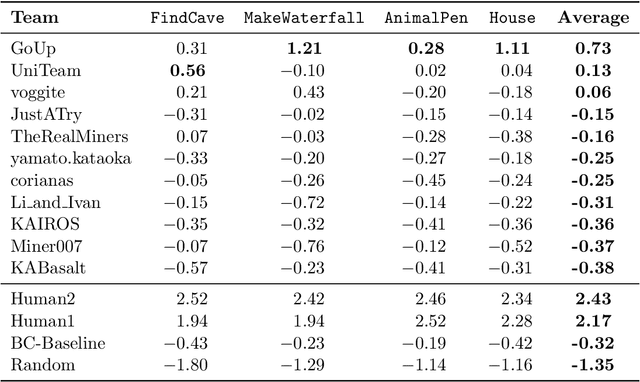
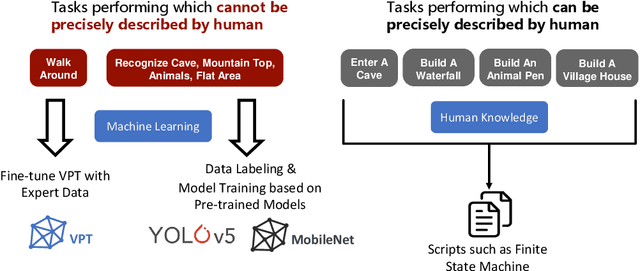
Abstract:To facilitate research in the direction of fine-tuning foundation models from human feedback, we held the MineRL BASALT Competition on Fine-Tuning from Human Feedback at NeurIPS 2022. The BASALT challenge asks teams to compete to develop algorithms to solve tasks with hard-to-specify reward functions in Minecraft. Through this competition, we aimed to promote the development of algorithms that use human feedback as channels to learn the desired behavior. We describe the competition and provide an overview of the top solutions. We conclude by discussing the impact of the competition and future directions for improvement.
Towards an Interpretable Hierarchical Agent Framework using Semantic Goals
Oct 16, 2022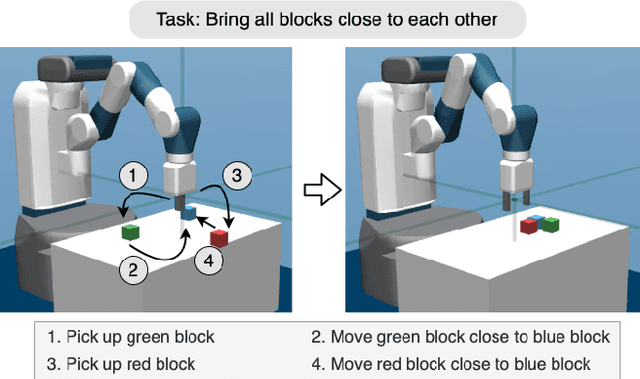

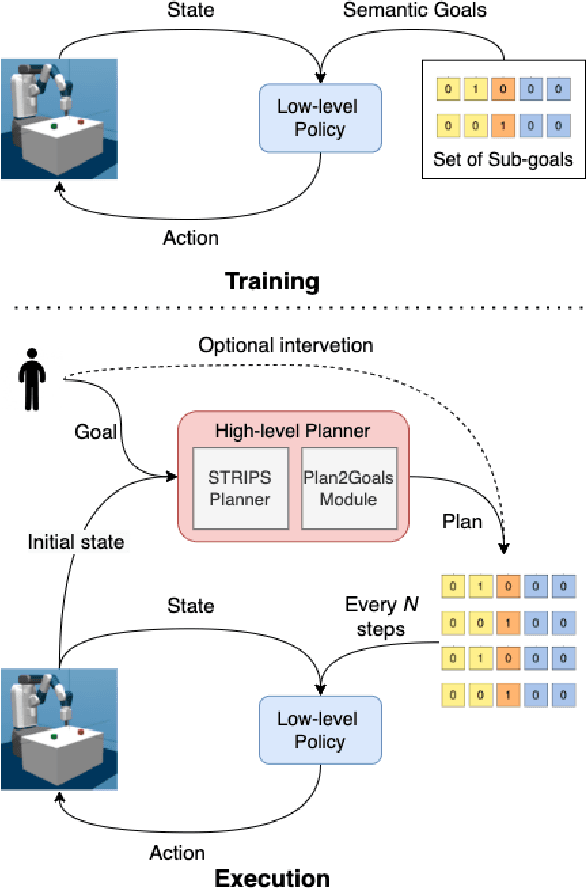

Abstract:Learning to solve long horizon temporally extended tasks with reinforcement learning has been a challenge for several years now. We believe that it is important to leverage both the hierarchical structure of complex tasks and to use expert supervision whenever possible to solve such tasks. This work introduces an interpretable hierarchical agent framework by combining planning and semantic goal directed reinforcement learning. We assume access to certain spatial and haptic predicates and construct a simple and powerful semantic goal space. These semantic goal representations are more interpretable, making expert supervision and intervention easier. They also eliminate the need to write complex, dense reward functions thereby reducing human engineering effort. We evaluate our framework on a robotic block manipulation task and show that it performs better than other methods, including both sparse and dense reward functions. We also suggest some next steps and discuss how this framework makes interaction and collaboration with humans easier.
Multiple View Performers for Shape Completion
Sep 13, 2022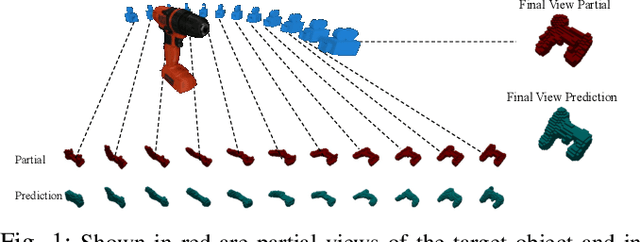
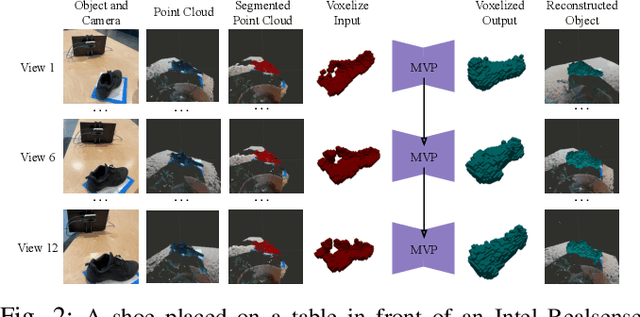
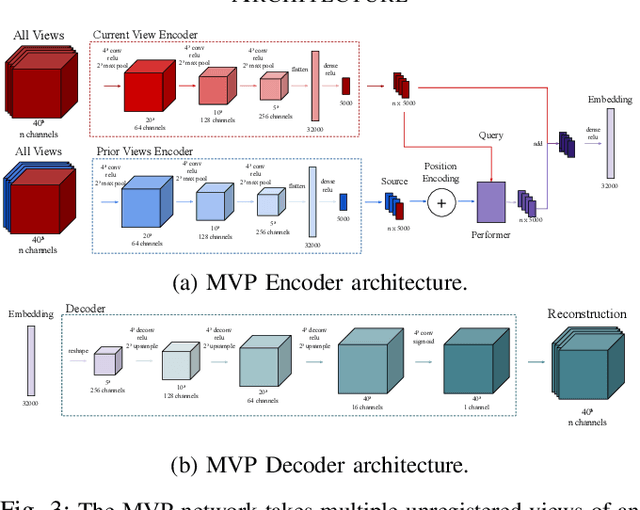

Abstract:We propose the Multiple View Performer (MVP) - a new architecture for 3D shape completion from a series of temporally sequential views. MVP accomplishes this task by using linear-attention Transformers called Performers. Our model allows the current observation of the scene to attend to the previous ones for more accurate infilling. The history of past observations is compressed via the compact associative memory approximating modern continuous Hopfield memory, but crucially of size independent from the history length. We compare our model with several baselines for shape completion over time, demonstrating the generalization gains that MVP provides. To the best of our knowledge, MVP is the first multiple view voxel reconstruction method that does not require registration of multiple depth views and the first causal Transformer based model for 3D shape completion.
Learning to Guide Multiple Heterogeneous Actors from a Single Human Demonstration via Automatic Curriculum Learning in StarCraft II
May 11, 2022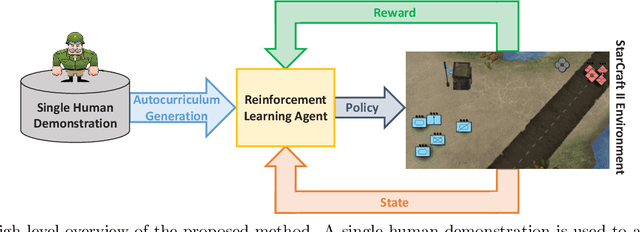


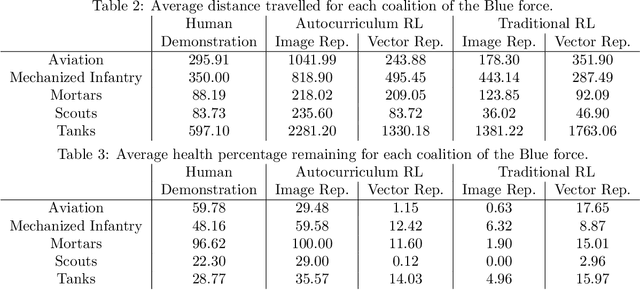
Abstract:Traditionally, learning from human demonstrations via direct behavior cloning can lead to high-performance policies given that the algorithm has access to large amounts of high-quality data covering the most likely scenarios to be encountered when the agent is operating. However, in real-world scenarios, expert data is limited and it is desired to train an agent that learns a behavior policy general enough to handle situations that were not demonstrated by the human expert. Another alternative is to learn these policies with no supervision via deep reinforcement learning, however, these algorithms require a large amount of computing time to perform well on complex tasks with high-dimensional state and action spaces, such as those found in StarCraft II. Automatic curriculum learning is a recent mechanism comprised of techniques designed to speed up deep reinforcement learning by adjusting the difficulty of the current task to be solved according to the agent's current capabilities. Designing a proper curriculum, however, can be challenging for sufficiently complex tasks, and thus we leverage human demonstrations as a way to guide agent exploration during training. In this work, we aim to train deep reinforcement learning agents that can command multiple heterogeneous actors where starting positions and overall difficulty of the task are controlled by an automatically-generated curriculum from a single human demonstration. Our results show that an agent trained via automated curriculum learning can outperform state-of-the-art deep reinforcement learning baselines and match the performance of the human expert in a simulated command and control task in StarCraft II modeled over a real military scenario.
Retrospective on the 2021 BASALT Competition on Learning from Human Feedback
Apr 14, 2022
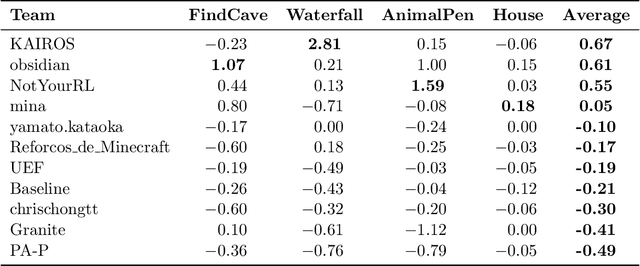
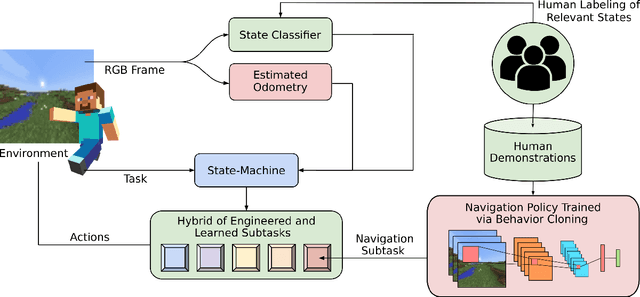
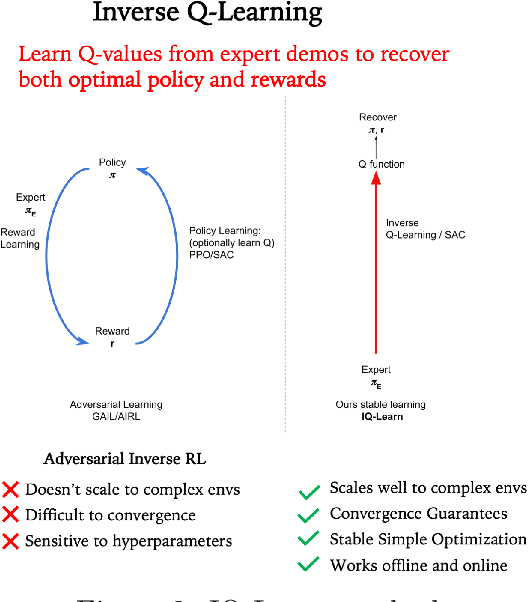
Abstract:We held the first-ever MineRL Benchmark for Agents that Solve Almost-Lifelike Tasks (MineRL BASALT) Competition at the Thirty-fifth Conference on Neural Information Processing Systems (NeurIPS 2021). The goal of the competition was to promote research towards agents that use learning from human feedback (LfHF) techniques to solve open-world tasks. Rather than mandating the use of LfHF techniques, we described four tasks in natural language to be accomplished in the video game Minecraft, and allowed participants to use any approach they wanted to build agents that could accomplish the tasks. Teams developed a diverse range of LfHF algorithms across a variety of possible human feedback types. The three winning teams implemented significantly different approaches while achieving similar performance. Interestingly, their approaches performed well on different tasks, validating our choice of tasks to include in the competition. While the outcomes validated the design of our competition, we did not get as many participants and submissions as our sister competition, MineRL Diamond. We speculate about the causes of this problem and suggest improvements for future iterations of the competition.
Combining Learning from Human Feedback and Knowledge Engineering to Solve Hierarchical Tasks in Minecraft
Dec 07, 2021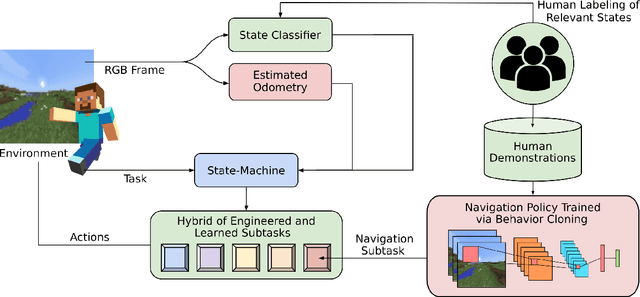

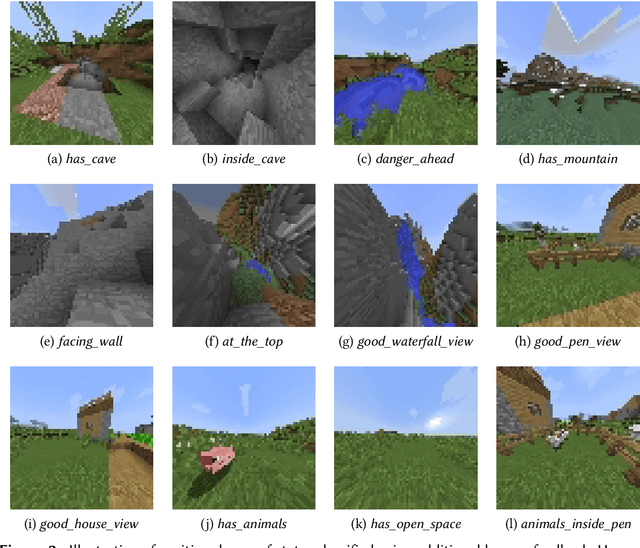
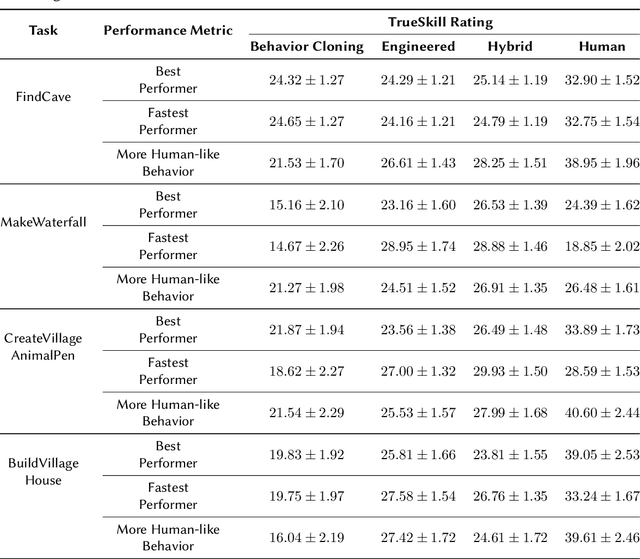
Abstract:Real-world tasks of interest are generally poorly defined by human-readable descriptions and have no pre-defined reward signals unless it is defined by a human designer. Conversely, data-driven algorithms are often designed to solve a specific, narrowly defined, task with performance metrics that drives the agent's learning. In this work, we present the solution that won first place and was awarded the most human-like agent in the 2021 NeurIPS Competition MineRL BASALT Challenge: Learning from Human Feedback in Minecraft, which challenged participants to use human data to solve four tasks defined only by a natural language description and no reward function. Our approach uses the available human demonstration data to train an imitation learning policy for navigation and additional human feedback to train an image classifier. These modules, together with an estimated odometry map, are then combined into a state-machine designed based on human knowledge of the tasks that breaks them down in a natural hierarchy and controls which macro behavior the learning agent should follow at any instant. We compare this hybrid intelligence approach to both end-to-end machine learning and pure engineered solutions, which are then judged by human evaluators. Codebase is available at https://github.com/viniciusguigo/kairos_minerl_basalt.
Automatic Goal Generation using Dynamical Distance Learning
Nov 07, 2021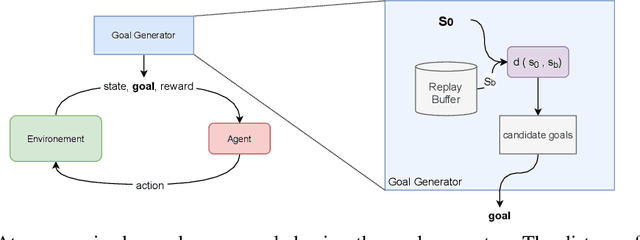


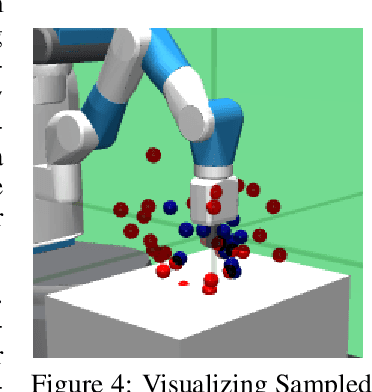
Abstract:Reinforcement Learning (RL) agents can learn to solve complex sequential decision making tasks by interacting with the environment. However, sample efficiency remains a major challenge. In the field of multi-goal RL, where agents are required to reach multiple goals to solve complex tasks, improving sample efficiency can be especially challenging. On the other hand, humans or other biological agents learn such tasks in a much more strategic way, following a curriculum where tasks are sampled with increasing difficulty level in order to make gradual and efficient learning progress. In this work, we propose a method for automatic goal generation using a dynamical distance function (DDF) in a self-supervised fashion. DDF is a function which predicts the dynamical distance between any two states within a markov decision process (MDP). With this, we generate a curriculum of goals at the appropriate difficulty level to facilitate efficient learning throughout the training process. We evaluate this approach on several goal-conditioned robotic manipulation and navigation tasks, and show improvements in sample efficiency over a baseline method which only uses random goal sampling.
 Add to Chrome
Add to Chrome Add to Firefox
Add to Firefox Add to Edge
Add to Edge